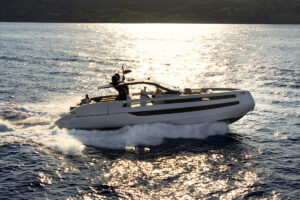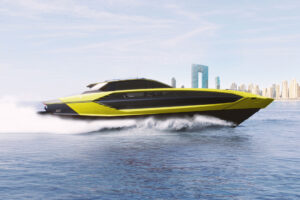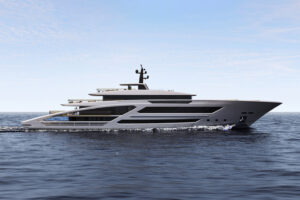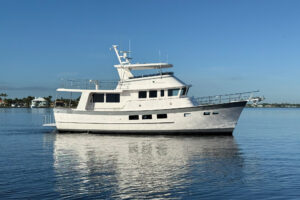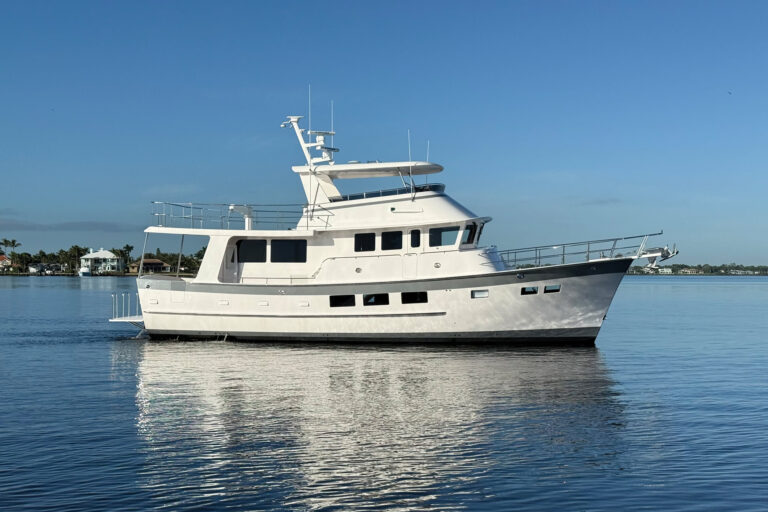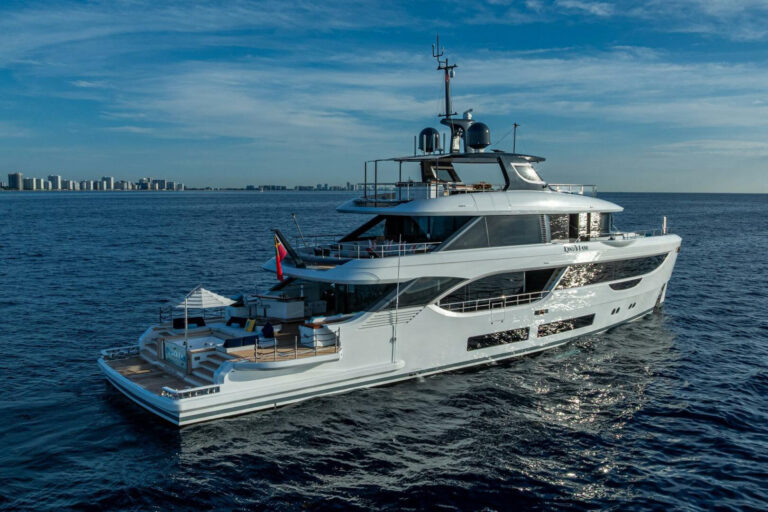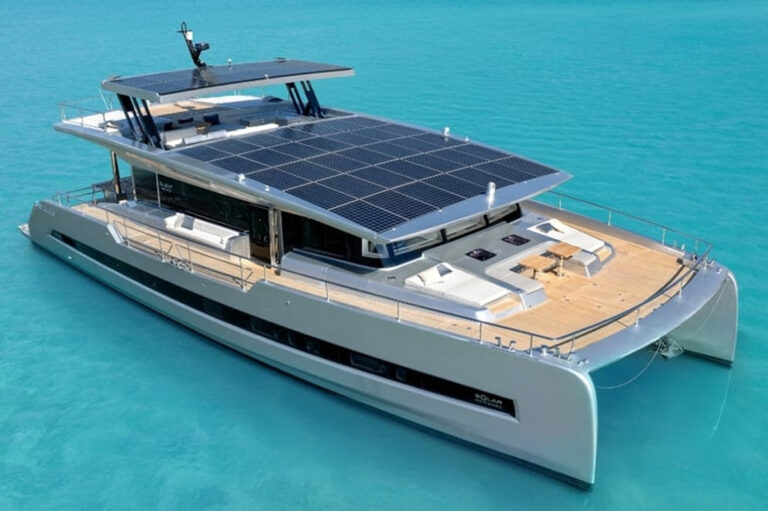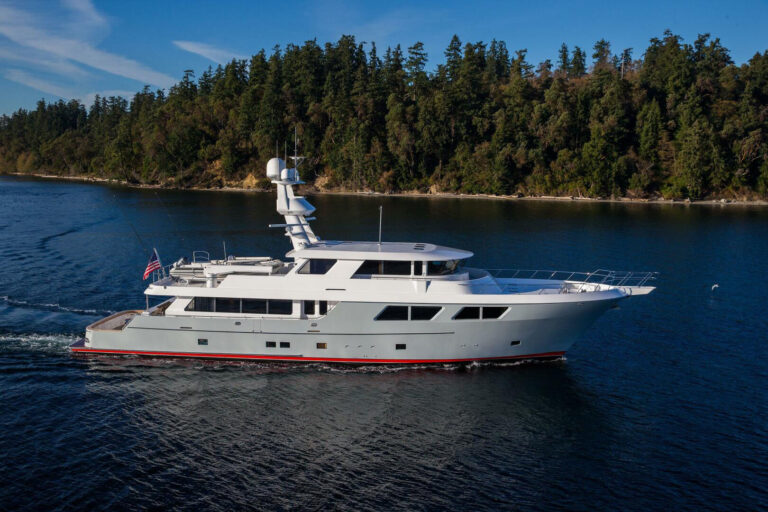The traditional chart table has largely given way to a GPS interfaced with a computer and the largest, brightest screen that fits the budget. It’s got a navigation software program with a worldwide chart database and some computer games to keep people occupied when the system is not needed for simple chart work.
Today’s software goes well beyond simple chart work. Wind velocity, boat speed and depth information add to the all-encompassing nature of the presentation. Aerial photographs can be integrated with chart data, further simplifying orientation when entering a strange port. And just when the system seemed to be about as complete as it could be, those cunning engineers found ways to add to the mix.
Nobeltec presented its latest version of Visual Navigation Suite during a cruise on a 72-foot DeFever motoryacht at the Ft. Lauderdale International Boat Show. Visual Series 6.0 adds three capabilities to the already well-endowed software package: 3D navigation, a weather overlay system and streets and roads on certain Passport World Charts.
3D navigation presents a perspectival view of underwater topography beneath the boat. This bathymetric presentation takes advantage of the existing soundings database, using sounding data beyond the relatively few depths that can be plotted on a chart. There is, of course, no guarantee the bottom contour is the same as when the soundings were taken. An obstruction may somehow have been added to the real world below, a recent shipwreck, for example.
The bathymetric presentation’s main value will be helping mariners visualize bottom contours beneath, ahead and to both sides of the vessel. The real-time data for the area in which the demonstration was made, Port Everglades, Florida, was unexciting. Florida’s underwater topography tends to be about as flat as what you see on dry land (the highest point of land in the state is a landfill).
Navigating the harbor entrances farther up the East Coast will provide a more vivid experience, and canyon fishermen will surely love this system. One criticism: Although the vessel is shown properly positioned above the depicted sea floor, the actual depth of the water below the vessel is not shown on screen. Depth numbers would help validate the accuracy of what is being shown.
The Weather Overlay system can present downloaded weather information on the Passport Charts. This free, three-day forecast data can be downloaded from the Nobeltec Web site and includes wind fields and barometric pressure information. A series of additional weather products is available on subscription. Depending on the level of service (Bronze, Silver or Gold), subscriptions include three-, five- or 10-day forecast data for surface pressure, wind, ocean currents and swell conditions; five- or 10-day sea state forecasts; one- or three-day forecasts for movement of highs and lows; weather fronts and the tropical weather outlook; and one day’s forecast of sea-surface temperature.
The cost for the various levels of service, delivered by e-mail, range from $10 to $20 per day for the Bronze level to $1,000 per year for everything. Monthly rates for the three packages range from $20 to $100.
The addition of streets and roads to the Passport charts was well demonstrated. The well-known street layout of the area surrounding Port Everglades was accurate. Major street names were visible. This type of information will be useful in an unfamiliar port, if, say, you need to find the obscure supplier who sells parts for your refrigeration system. It will be especially valuable if you travel by bicycle or walk. That’s when going a few miles in the wrong direction can turn an outing into a trek.
Depending on the vessel, display screen visibility will be a critical issue. Conventional computer displays can be used in many enclosed helm station installations, as long as some form of light-excluding hood is provided against the sun’s glare. It may seem a bit odd at first, but having a black apron handy to cover a light-colored shirt can mean the difference between seeing the screen clearly and fighting the glare beaming off your chest.
For installations in exposed locations, the screen can’t be too bright. A level of 1,400 to 1,500 nits will be needed, and even a screen that bright may need to be shaded to be seen well. Decent-size (15-inch diagonal), 1,500-nit screens are about $7,000.
The weather feature on this latest version of Nobeltec’s well-known software package may be a bit beyond the day-to-day needs of the average boater. After all, most trips are of short duration and close enough to the local NOAA weather station to make the downloading and display of surface swell data irrelevant.
However rarely used, this type of feature does add value. No programmer worth his sodium chloride would pass up a chance to include it, and Nobeltec clearly has some salt-encrusted programmers.
For one thing, the new bathymetric and weather capabilities make great teaching aids. Study of the undersea floor depictions alongside conventional chart data can help any mariner better understand the meanings of the soundings. Similarly, study of the weather overlays, along with knowledge of how the local weather patterns are developing, can build a mariner’s skill as a forecaster.
It is difficult to avoid getting carried away with all the technology contained in systems such as Version 6.0. Still, I offer one last concern: Because of the capabilities and fascination the computer-based navigation system can provide, we must avoid a tendency toward what aviators call “head down in the cockpit.” That is, looking only at what is on the instrument panel. We will be sorely tempted to stare at the chart/navigation/radar/sonar/bathymetric/weather display system, with hardly a glance out the bridge windows.
Clearly, this is not an acceptable way to navigate. Concentration on the screen is fine when running your sailing simulator program, but not when under way in the non-electronic real world. Once in a while, put on your UV protection, go on deck and take a look around. You might even like what you see.
Price: $489.
Contact: Nobeltec, (800) 946-2877; www.nobeltec.com.

